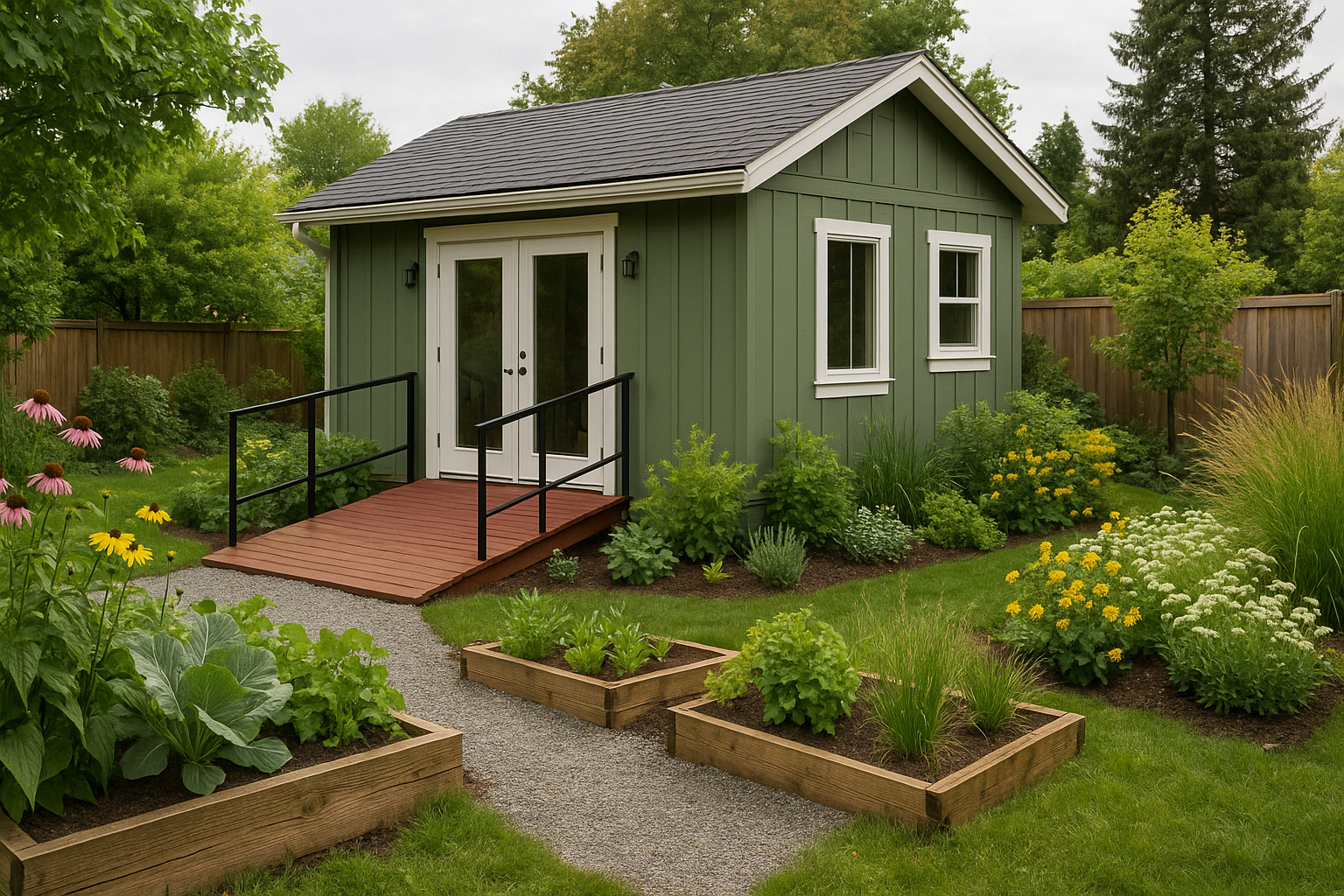
ADU Outdoor Design: Canadian Landscaping and Accessible Gardens That Work
Estimated reading time: 8 minutes
Key Takeaways
- Inclusive outdoor design: ADU outdoor design emphasizes accessible environments that cater to all ages and abilities.
- Resilient Canadian landscaping: Choosing native, hardy plants and sustainable practices is essential for weather challenges.
- Multi-use spaces: Smart layouts create flexible areas for relaxation, entertaining, and gardening even on compact lots.
- Universal design principles: Barrier-free pathways, raised gardens, and sensory-friendly features ensure usability for everyone.
- Planning and permits: Budgeting, compliance with Canadian building codes, and expert advice are key to a successful project.
Table of contents
- Understanding ADU Outdoor Design Basics
- Incorporating Universal Design
- Designing Accessible Gardens
- Tailoring Canadian Landscaping for ADU Outdoor Spaces
- Creating Relaxing and Sustainable Green Spaces
- Plant Selection and Layout Tips
- Practical Considerations and Resources
- Conclusion: Transform Your Outdoor Living
- Frequently Asked Questions
Understanding ADU Outdoor Design Basics
Creating a beautiful and functional outdoor area for your ADU means planning, shaping, and planting every square metre to support flexible, multigenerational living. Unlike traditional large yards, ADU outdoor design focuses on compact, well-thought-out spaces that are both welcoming and practical.
This approach is about scale matching your design to the ADU’s smaller footprint and ensuring that outdoor zones work for relaxing, entertaining, or even container gardening. For more inspiration, check out Multigenerational Living with ADUs.
- Scale matching: Choose features that suit a smaller space.
- Multi-use design: Create zones for dining, studying, or leisure.
Incorporating Universal Design: Principles for Accessible Outdoor Spaces
Universal design means your outdoor area is safe and enjoyable for everyone – kids, seniors, and those with mobility differences. It focuses on intuitive layouts, such as barrier-free pathways and accessible amenities, that allow for seamless movement.
Key features include the installation of smooth, non-slip surfaces, gentle ramps, and raised garden beds. For further guidance, visit Accessible Outdoor Spaces.
- Barrier-free pathways: Ensuring smooth surfaces for wheelchairs and strollers.
- Raised garden beds: Making gardening easier for everyone.
- Accessible amenities: Benches and water taps positioned for universal reach.
Designing Accessible Gardens: Comfort and Usability for All
An accessible garden invites everyone to relax and engage. Through thoughtful plant placement and raised beds, you can create a garden that is both beautiful and functional.
Consider placing aromatic plants like lavender or tactile options like lamb’s ear near seating areas. For additional ideas, view Accessible Tiny Homes.
- Plant placement: Taller plants at the back and aromatic ones in front.
- Raised beds and containers: Simplify gardening by minimizing bending.
- Thoughtful seating: Create shaded areas with supportive benches.
Tailoring Canadian Landscaping for ADU Outdoor Spaces
Canadian climates require resilient outdoor design. When planning your ADU’s landscape, consider factors such as harsh winters, variable moisture, and short growing seasons.
Opt for hardy, native species and sustainable practices like mulching and permeable paving. Explore ideas at Landscaping Ideas for ADUs in Canada and ADU Landscaping for Small Spaces in Canada.
- Hardy plants: Use native shrubs and perennials suited to Canadian weather.
- Sustainable practices: Mulch, rain gardens, and permeable paths help manage water and temperature.
Creating Relaxing and Sustainable Green Spaces
Your ADU’s outdoor area should be a haven of peace, mixing aesthetics and sustainability. Relaxing green spaces can boost mental well-being while supporting local ecosystems.
Incorporate natural materials, privacy screens, and eco-friendly elements like solar-powered lights. For more eco-conscious ideas, read about Building an Eco-Friendly Home: Practical Canadian Strategies.
- Privacy screens: Use trellises or evergreen fences to create secluded spots.
- Natural materials: Stone, wood, and recycled pavers add timeless beauty.
Plant Selection and Layout Tips for ADU Outdoor Design
Selecting the right plants is critical not only for beauty but also for usability. Focus on native shrubs, perennials, and even edibles to create an engaging outdoor space.
Layer plants of varying heights and textures to provide year-round interest and easy maintenance. Check out guides on Small Homes: Compact Living and Efficient Home Design and Tiny Home Living: Your Complete Guide for further inspiration.
- Native shrubs and perennials: Serviceberry, dogwood, and yarrow are excellent choices.
- Layout strategies: Create barrier-free paths and balanced planting beds for ease of care.
Practical Considerations and Resources
When transforming your outdoor ADU space, planning for the long term is essential. Invest in durable materials and be mindful of local building codes.
Ensure you check permit requirements and consult experts when needed. For compliance details related to decks and patios, visit Deck, Patio, or Balcony Options & Canadian Building Code.
- Durable materials: Stone, composite decking, and metal fixtures ensure longevity.
- Expert guidance: Consulting landscape designers familiar with ADU requirements can save time and effort.
Conclusion: Transform Your Outdoor Living with Canadian ADU Outdoor Design
A well-planned ADU outdoor design creates inviting connections among homes, nature, and communities. By integrating universal design, accessible gardens, and resilient Canadian landscaping, you ensure that every space is both beautiful and functional.
This design approach not only enhances curb appeal but also supports multigenerational living and sustainable lifestyles. Start planning your outdoor transformation today and explore more on related topics such as Designing Accessible Tiny Homes and ADUs.
Frequently Asked Questions
Q1: What is ADU outdoor design?
A1: ADU outdoor design involves creating compact, accessible, and multi-functional outdoor spaces that complement accessory dwelling units. It emphasizes universal design principles and resilient landscaping suited for Canadian climates.
Q2: How do universal design principles improve outdoor spaces?
A2: Universal design ensures that pathways, seating, and garden features are accessible to everyone, including seniors and people with mobility challenges. Features like barrier-free paths and raised gardens promote safety and inclusivity.
Q3: Why is Canadian landscaping unique for ADU designs?
A3: Canadian landscaping must contend with harsh winters, variable moisture levels, and short growing seasons. Using native and hardy plants along with sustainable practices ensures that outdoor spaces remain vibrant and low-maintenance throughout the year.

Leave a Reply